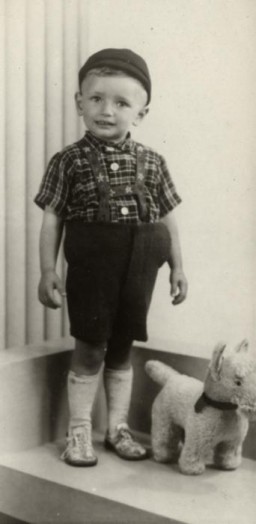You searched for: Sobibor
<< Previous | Displaying results 41-50 of 148 for "Sobibor" | Next >>
-
Jacob Unger
ID CardJacob was living in Essen, Germany, when he met and married Erna Schumer, who, like him, came from a religious Jewish background. The couple had two children, Max, born in 1923 and Dora, born in 1925. Jacob worked as a salesman, and in the evenings he tutored students in Hebrew. 1933-39: In 1933 when Hitler came to power, Jacob went to Amsterdam to explore the possibility of the family moving there. However, Erna did not want to leave her three sisters who were living in Essen, and she also believed that…
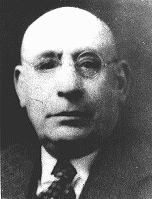
-
Eva Brigitte Marum
ID CardEva Brigitte was the youngest of three children born to German-Jewish parents in the capital of Baden, a state along the Rhine River in southwestern Germany. Known as Brigitte by her friends and classmates, and as "Brix" by her family, she grew up in a secular household and attended public schools. Her father was a local Social Democratic party leader. 1933-39: In 1933 the Nazis came to the Marum's house and arrested Eva's father because he was an active anti-Nazi. Two months later she suddenly saw him…

-
Frederik Polak
ID CardFrederik was raised in a religious Jewish home. His father was a scribe of Jewish holy texts. Frederik studied accounting and became a certified public accountant. After his father died, he helped support his three sisters, his blind brother and his mother. When he was in his mid-20's, Frederik married and started his own family. 1933-39: Creating an atmosphere of Jewish observance in the home was important to Frederik and his wife. They loved to celebrate the Sabbath and the Jewish holidays with their…
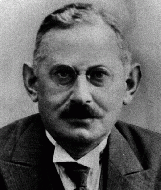
-
Operation Reinhard (Einsatz Reinhard)
ArticleNazi Germany established the killing centers of Belzec, Sobibor, and Treblinka as part of “Operation Reinhard,” the plan to murder all Jews in the General Government.
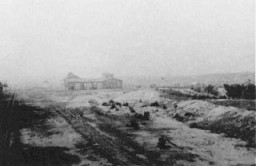
-
Johann Niemann at the Grafeneck "euthanasia" killing center
PhotoJohann Niemann (left) and an unidentified man walk on the snow covered driveway to Grafeneck Castle in early 1940. Niemann worked as a stoker at Grafeneck, cremating victims' corpses in the crematoria. He later became the deputy commander of the Sobibor killing center.

-
Selma Wijnberg
ID CardSelma was the youngest of the Wijnberg's four children, and the only daughter. When she was 7, her family left Groningen to start a business in the town of Zwolle [in the Netherlands]. There her parents ran a small hotel popular with Jewish businessmen traveling in the area. Every Friday there was a cattle market, and many of the cattle dealers came to the Wijnberg's hotel for coffee and business. 1933-39: At home Selma and her family were observant of Jewish tradition because her mother was religious.…
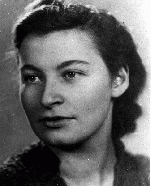
-
Erna Schumer Unger
ID CardErna was the second of four daughters. Her religious Jewish parents moved the family to Essen, Germany, in 1905 when Erna was 21. Erna married when she was in her twenties, but the couple had no children and her husband passed away. After living as a widow for some years, Erna remarried to Jacob Unger, a salesman, and together they had two children, Max and Dora. 1933-39: When Hitler became chancellor of Germany in 1933, Jacob went to Amsterdam to explore the possibility of the family settling there.…
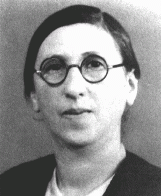
-
Tomas Kulka
ID CardTomas' parents were Jewish. His father, Robert Kulka, was a businessman from the Moravian town of Olomouc. His mother, Elsa Skutezka, was a milliner from Brno, the capital of Moravia. The couple was well-educated and spoke both Czech and German. They married in 1933 and settled in Robert's hometown of Olomouc. 1933-39: Tomas was born a year and a day after his parents were married. When Tomas was 3, his grandfather passed away and the Kulkas moved to Brno, which was his mother's hometown. On March 15,…

-
Studio portrait of Jankl Zuckerkandel
PhotoStudio portrait of Jankl Zuckerkandel, taken in The Hague, the Netherlands, in or around 1941. Jankl was killed in Sobibor at the age of three.
